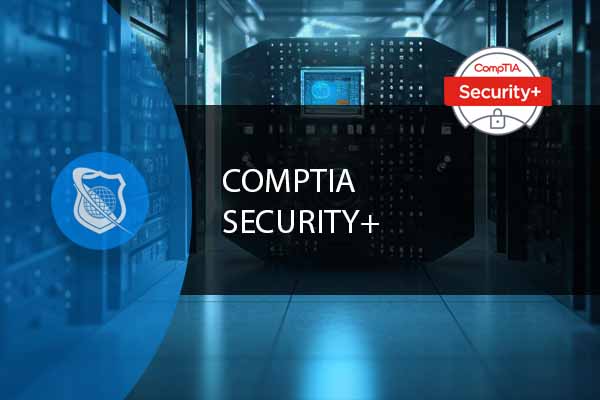Vulnerability management is a critical aspect of cybersecurity that focuses on identifying, classifying, prioritizing, remediating, and mitigating vulnerabilities within an organization’s systems and networks. This comprehensive guide aims to shed light on the key concepts and practices involved in effective vulnerability management.
Key Concepts in Vulnerability Management
Vulnerability management is a critical aspect of cybersecurity, focusing on identifying, prioritizing, and addressing vulnerabilities in a system to protect against threats. Below, we delve deeper into key concepts within vulnerability management, offering a more detailed perspective on how each component plays a vital role in safeguarding information and systems.
Confirmed Vulnerability
A confirmed vulnerability is one that has been thoroughly tested and verified as a genuine weakness in the system. This confirmation means that the vulnerability is not a false positive; it is an actual flaw that could potentially be exploited by attackers. The process of confirming vulnerabilities often involves reproducing the issue under controlled conditions to ensure that it poses a real threat to the system’s security.
False Positives and False Negatives
- False Positives: These are incorrectly identified vulnerabilities. A system might flag an activity or piece of code as malicious or vulnerable when it is not. While false positives might seem harmless, they can waste valuable resources and time, diverting attention from real threats.
- False Negatives: These occur when a system fails to detect an existing vulnerability. This oversight is more dangerous than false positives because it leaves the system exposed to potential exploits without any alert to the vulnerability. Addressing false negatives is critical in tightening security measures.

Information Security Manager Career Path
Propel your career forward and be part of an essential member of any management team as an Information Security Manager. This advanced training series is designed specifically for those want to move up into a management position in the IT field.
Prioritization
Prioritization is the process of ranking vulnerabilities based on their severity, exploitability, and impact on the system. This ranking helps organizations allocate their limited resources efficiently, focusing on patching the most critical vulnerabilities first. Factors such as the vulnerability’s exploitability, the value of the affected assets, and the potential damage from an exploit are considered in this process.
Remediation
Remediation involves taking action to fix identified vulnerabilities. This could include applying patches, changing configurations, or even removing affected components from the network. Effective remediation reduces the attack surface and mitigates potential threats before they can be exploited.
Preventive, Detective, and Compensating Controls
- Preventive Controls: Measures designed to prevent security incidents before they occur. Examples include firewalls, access controls, and encryption.
- Detective Controls: These are designed to detect and alert on security breaches or policy violations. Intrusion detection systems (IDS) and log analysis tools are examples of detective controls.
- Compensating Controls: Implemented to provide an alternative measure of protection when existing controls are deemed insufficient. These controls might not directly address the vulnerability but provide additional layers of security to mitigate the risk.
Patch Management
Patch management is a critical process in vulnerability management, involving the acquisition, testing, and installation of patches to fix vulnerabilities in software and firmware. A strong patch management policy is essential to ensure that vulnerabilities are addressed promptly, reducing the window of opportunity for attackers to exploit them.
Account Audit
Account audits are a form of detective control focusing on the review and monitoring of user accounts. Regular audits can identify inactive or unauthorized accounts, reducing the risk of unauthorized access.
Exposure Factor
The exposure factor is a metric used in risk assessment to quantify the potential loss or damage that could result from a vulnerability being exploited. It is expressed as a percentage of loss, helping organizations understand the potential impact of specific threats.
Environmental Variables
In the context of vulnerability management, environmental variables refer to external and internal factors that can influence the severity and exploitability of vulnerabilities. These may include physical environment conditions, such as temperature and humidity, or organizational factors, such as the network architecture or security policies.
Industrial or Organizational Impact
This concept focuses on the broader implications of a vulnerability, considering how its exploitation could affect an entire organization or industry. Understanding this impact is crucial for prioritizing responses and allocating resources to defend against vulnerabilities that could have far-reaching consequences.
Risk Tolerance
Risk tolerance is the level of risk an organization is willing to accept in pursuit of its objectives. It influences decision-making in vulnerability management, guiding how aggressively an organization responds to and mitigates vulnerabilities.
Secure Your Networks and Prevent Password Breaches
Our robust CompTIA Sec+ course is the perfect resouce to ensure your company’s most valuable assets are safe. Up your security skills with this comprehensive course at an exceptional price.
Types of Controls in Vulnerability Management
In vulnerability management, controls are mechanisms put in place to mitigate or eliminate the risk of security vulnerabilities. These controls are fundamental to maintaining the confidentiality, integrity, and availability of information systems. They are broadly categorized into preventive, detective, compensating, and corrective controls, each serving a distinct purpose in the broader context of cybersecurity. Here’s a closer look at each type of control, offering a more detailed understanding of their roles in vulnerability management.
Preventive Controls
Preventive controls are designed to prevent security incidents before they occur. Their primary aim is to safeguard against the exploitation of vulnerabilities by implementing measures that block potential attacks or make it significantly harder for an attack to be carried out successfully. Examples of preventive controls include:
- Firewalls: Act as a barrier between secure internal networks and untrusted external networks, controlling traffic based on predetermined security rules.
- Access Controls: Ensure that only authorized individuals can access specific resources, based on the principles of least privilege and need-to-know.
- Encryption: Protects data at rest and in transit, making it unreadable to unauthorized users even if they gain access.
- Security Awareness Training: Equips employees with the knowledge to recognize and avoid potential security threats, such as phishing attacks.
Detective Controls
Detective controls are mechanisms that identify and alert organizations to ongoing or occurred security incidents. These controls are crucial for the timely detection of threats, enabling organizations to respond swiftly to mitigate damage. Examples include:
- Intrusion Detection Systems (IDS): Monitor network and system activities for malicious activities or policy violations, sending alerts when suspicious behavior is detected.
- Log Management and Analysis: Collects, analyzes, and monitors log files from various systems and applications, identifying indicators of compromise or anomalous activities that may suggest a security breach.
- Security Audits and Assessments: Regularly scheduled audits and assessments can uncover vulnerabilities and security gaps before they can be exploited.
Compensating Controls
Compensating controls are secondary controls that are put in place to enhance or substitute primary controls when they are unable to fully address a security requirement. These controls are particularly useful in situations where implementing the preferred control is impractical due to technical, operational, or financial constraints. For example:
- Additional Monitoring and Logging: If a system cannot be patched or updated to rectify a vulnerability, increased monitoring of the system’s activity can serve as a compensating control to detect exploitation attempts.
- Segmentation: Network segmentation can limit the spread of an attack within an organization, acting as a compensating control when systems on the same network have differing security levels or requirements.
Corrective Controls
Corrective controls are actions taken to repair the damage or restore the systems to their normal operating conditions after a security breach has occurred. These controls also include measures to prevent the recurrence of the incident. Examples of corrective controls include:
- Patching: Applying patches to fix vulnerabilities in software or firmware once a security flaw has been detected.
- Incident Response: Procedures and processes that are activated following a security incident to contain the breach, eradicate the threat, and recover the affected systems.
- System Updates: Updating systems and software to newer versions that have enhanced security features or that address known vulnerabilities.
Continuous Improvement
In addition to these controls, it’s important to note that vulnerability management is an ongoing process that requires continuous improvement. This includes regular reviews and updates to the controls as new threats emerge and as the organization’s environment and requirements change. The effectiveness of controls should be continuously monitored and assessed, with adjustments made as necessary to ensure the ongoing security of the organization’s assets.
In summary, a balanced approach to vulnerability management incorporates a mix of preventive, detective, compensating, and corrective controls, tailored to the organization’s specific risks, vulnerabilities, and security requirements. This multi-layered approach ensures that even if one control fails, others are in place to mitigate the risk, thereby enhancing the overall security posture of the organization.

Information Security Analyst Career Path
An Information Security Analyst plays a pivotal role in safeguarding an organization’s digital infrastructure and sensitive data. This job involves a blend of technical expertise, vigilance, and continuous learning to protect against ever-evolving cyber threats.
Tools and Techniques for Identifying Vulnerabilities
Identifying vulnerabilities is a critical step in vulnerability management, enabling organizations to discover weaknesses in their systems and applications before they can be exploited by attackers. Various tools and techniques are employed to systematically uncover, assess, and prioritize vulnerabilities, ensuring that they can be addressed through remediation efforts. Below, we explore some of the key tools and techniques used in the identification of vulnerabilities, offering insights into their functionalities and applications.
Vulnerability Scanners
Vulnerability scanners are automated tools that scan systems, networks, and applications for known vulnerabilities. They compare details about the system against databases of known vulnerabilities, such as the National Vulnerability Database (NVD), to identify potential security weaknesses. Examples include:
- Network Vulnerability Scanners: Scan the network to identify open ports, unpatched software, and other vulnerabilities on networked devices.
- Web Application Scanners: Focus on identifying security weaknesses in web applications, including issues like SQL injection, cross-site scripting (XSS), and security misconfigurations.
Static Application Security Testing (SAST)
SAST tools analyze source code, byte code, or binary code of applications without executing the program. The primary goal of SAST is to identify security vulnerabilities within the codebase early in the software development lifecycle (SDLC). SAST tools can detect issues such as buffer overflows, SQL injection vulnerabilities, and other security weaknesses that could be exploited if not addressed.
Dynamic Application Security Testing (DAST)
DAST tools assess applications from the outside in by examining them in their running state. This technique is useful for identifying runtime and environmental vulnerabilities, such as those related to authentication, session management, and data validation issues. DAST provides insights into how an application behaves during execution and how it interacts with external sources, helping to uncover vulnerabilities that may not be visible in the code itself.
Interactive Application Security Testing (IAST)
IAST combines elements of SAST and DAST by analyzing applications from within as they run. IAST tools are integrated into the application runtime environment, monitoring the application’s behavior and identifying vulnerabilities in real-time. This approach offers the advantage of detecting vulnerabilities in the context of the application’s execution, providing more accurate and actionable insights.
Penetration Testing
Penetration testing (pen testing) is a simulated cyber attack against your computer system to check for exploitable vulnerabilities. In the context of web application security, penetration testing is usually performed to augment a web application firewall (WAF). Pen tests involve the deliberate exploitation of vulnerabilities to determine whether unauthorized access or other malicious activity is possible. Penetration testers use a variety of tools and techniques to simulate attacks, uncovering vulnerabilities that could be exploited by malicious actors.
Security Information and Event Management (SIEM)
SIEM systems collect and aggregate log data generated throughout the organization’s technology infrastructure, from host systems and applications to network and security devices. By analyzing this data, SIEM can identify anomalous patterns and behaviors that may indicate a security vulnerability or an ongoing attack.
Configuration Management Tools
Configuration management tools ensure that systems and devices are configured according to established best practices and security guidelines. Misconfigurations are a common source of vulnerabilities; by automatically managing configurations, these tools help reduce the attack surface.
Open Source Intelligence (OSINT) Tools
OSINT tools gather data from publicly available sources to identify potential vulnerabilities. This can include information from forums, social media, and other online platforms where security flaws and vulnerabilities might be discussed. OSINT can provide insights into emerging threats and vulnerabilities that have not yet been formally documented.
Threat Intelligence Platforms
Threat intelligence platforms collect and analyze information about emerging threats and vulnerabilities from a variety of sources. By leveraging threat intelligence, organizations can stay ahead of attackers by being informed about new vulnerabilities, exploitation techniques, and other cybersecurity threats.
Patch Management Systems
While primarily used for the remediation phase, patch management systems also play a crucial role in identifying vulnerabilities by detecting outdated software and missing patches across the network. These systems can automate the process of downloading and applying patches, ensuring that vulnerabilities are addressed promptly.
Each of these tools and techniques plays a vital role in the identification of vulnerabilities. By employing a combination of these methods, organizations can achieve a comprehensive understanding of their security posture, allowing them to effectively prioritize and address vulnerabilities to enhance their overall security.
Vulnerability Reporting and Remediation
After identifying vulnerabilities, it is essential to document them comprehensively, prioritize them based on risk, and take appropriate remediation actions. This may involve patching, configuration updates, or the implementation of compensating controls. It is also crucial to retest the system to confirm that the vulnerabilities have been successfully remediated.
Vulnerability Classification Systems
- CVSS (Common Vulnerability Scoring System): A framework for assigning numerical scores to vulnerabilities, reflecting their severity.
- CVE (Common Vulnerabilities and Exposures): A list of publicly disclosed cybersecurity vulnerabilities.
- CWE (Common Weakness Enumeration): A categorization of software and hardware weaknesses that could lead to vulnerabilities.
Importance of Vulnerability Management
Effective vulnerability management is vital for maintaining the security and integrity of IT systems and networks. It helps organizations to proactively address security weaknesses before they can be exploited by attackers, thereby reducing the risk of data breaches and other cyber incidents.
In conclusion, vulnerability management is a complex but essential discipline within cybersecurity. By understanding and applying the concepts, practices, and tools discussed, organizations can significantly enhance their defensive posture against cyber threats.
Key Term Knowledge Base: Key Terms Related to Vulnerability Management
Vulnerability management is a critical aspect of cybersecurity that focuses on identifying, classifying, assessing, remediating, and mitigating vulnerabilities in software and systems to protect against cyber attacks. Understanding the key terms associated with vulnerability management is essential for professionals in the field, as it enables them to effectively communicate and implement strategies to safeguard digital assets. Below is a curated list of key terms that are foundational to mastering the basics of vulnerability management.
| Term | Definition |
|---|---|
| Vulnerability | A flaw or weakness in a system’s design, implementation, operation, or management that could be exploited to violate the system’s security policy. |
| Vulnerability Assessment | The process of identifying, quantifying, and prioritizing (or ranking) the vulnerabilities in a system. |
| Vulnerability Management | The cyclical practice of identifying, classifying, remediating, and mitigating vulnerabilities in software and systems. |
| Patch Management | The process of managing the acquisition, testing, and installation of patches (updates) to software and systems to correct vulnerabilities and improve security. |
| Threat | A potential cause of an unwanted incident, which may result in harm to a system or organization. |
| Risk | The potential for loss, damage, or destruction of an asset as a result of a threat exploiting a vulnerability. |
| Security Policy | A set of defined rules and criteria for how an organization manages and protects its sensitive information. |
| Exploit | A piece of software, a chunk of data, or a sequence of commands that takes advantage of a bug or vulnerability to cause unintended or unanticipated behavior to occur on computer software, hardware, or something electronic. |
| Zero-Day Vulnerability | A vulnerability that is unknown to those who would be interested in mitigating the vulnerability, including the vendor of the target software. A zero-day exploit is an exploit that targets a zero-day vulnerability. |
| Intrusion Detection System (IDS) | A device or software application that monitors a network or systems for malicious activity or policy violations. |
| Intrusion Prevention System (IPS) | A network security/threat prevention technology that examines network traffic flows to detect and prevent vulnerability exploits. |
| Security Information and Event Management (SIEM) | A set of tools and services offering a holistic view of an organization’s information security. |
| Compliance | Adherence to laws, regulations, guidelines, and specifications relevant to the organization’s business. |
| Penetration Testing | An authorized simulated cyber attack on a computer system, performed to evaluate the security of the system. |
| Security Audit | A systematic evaluation of the security of a company’s information system by measuring how well it conforms to a set of established criteria. |
| Encryption | The process of converting information or data into a code, especially to prevent unauthorized access. |
| Firewall | A network security system that monitors and controls incoming and outgoing network traffic based on predetermined security rules. |
| Vulnerability Scanning | The automated process of proactively identifying security vulnerabilities of computing systems in a network in order to determine if and where a system can be exploited and/or threatened. |
| Incident Response | A set of procedures that an organization follows when a security breach or cyberattack occurs. |
| Risk Assessment | The process of identifying, assessing, and prioritizing risks to organizational operations (including mission, functions, image, or reputation), organizational assets, individuals, other organizations, and the Nation, caused by the operation and use of information systems. |
| Security Controls | Safeguards or countermeasures to avoid, detect, counteract, or minimize security risks to physical property, information, computer systems, or other assets. |
| CVE (Common Vulnerabilities and Exposures) | A list of publicly disclosed cybersecurity vulnerabilities and exposures that is free to search, use, and incorporate into products and services. |
| CVSS (Common Vulnerability Scoring System) | A free and open industry standard for assessing the severity of computer system security vulnerabilities. |
| Asset Inventory | A comprehensive list of an organization’s IT assets, including hardware and software, which is critical for effective vulnerability management. |
| Patch | A piece of software designed to update a computer program or its supporting data, to fix or improve it. This includes fixing security vulnerabilities and other bugs. |
| Threat Intelligence | Evidence-based knowledge, including context, mechanisms, indicators, implications, and actionable advice, about an existing or emerging menace or hazard to assets. |
| Security Posture | The overall security status of software, networks, services, and information, including the adequacy of defenses against threats. |
This glossary provides a foundation for understanding the complex and dynamic field of vulnerability management. Familiarity with these terms will enhance communication and operational effectiveness in cybersecurity roles.
Frequently Asked Questions Related to Vunerability Management
What is Vulnerability Management?
Vulnerability management is a continuous cybersecurity discipline that involves identifying, classifying, prioritizing, remediating, and mitigating vulnerabilities in software and network systems. It aims to reduce the risk of exploitation through a systematic and proactive approach to security weaknesses within an organization’s technology environment.
How Often Should Vulnerability Scans be Performed?
The frequency of vulnerability scans should be determined by several factors, including the organization’s size, the complexity of its network, regulatory requirements, and the ever-changing threat landscape. As a best practice, it is recommended to perform vulnerability scans quarterly at a minimum, with more frequent scans (e.g., monthly or even weekly) for critical systems or after significant changes to the IT infrastructure.
What is the Difference Between Vulnerability Scanning and Penetration Testing?
Vulnerability scanning is an automated process to identify and report potential vulnerabilities in networks and systems. It is generally broad and non-intrusive, relying on known vulnerability signatures. Penetration testing, on the other hand, is a targeted, simulated cyber attack against your system to exploit vulnerabilities and assess the real-world effectiveness of existing security measures. Penetration testing is more manual, in-depth, and aims to show how an attacker could exploit vulnerabilities.
How Do I Prioritize Vulnerabilities for Remediation?
Prioritizing vulnerabilities involves assessing their severity, the value of the assets they affect, and the potential impact of an exploit on the organization. Factors to consider include the vulnerability’s CVSS (Common Vulnerability Scoring System) score, the ease of exploitation, the presence of known exploits, and the relevance to the organization’s critical systems and data. Prioritization ensures that resources are allocated to address the most critical vulnerabilities first.
Can Vulnerability Management Guarantee the Security of My Systems?
While vulnerability management significantly reduces the risk of security breaches, it cannot guarantee absolute security. The cybersecurity landscape is dynamic, with new vulnerabilities and attack methods emerging constantly. A robust vulnerability management program, part of a layered security strategy, is essential for minimizing risks but should be complemented with other security practices, such as incident response planning, security awareness training, and data encryption, to enhance overall security posture.

























